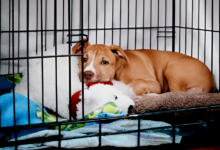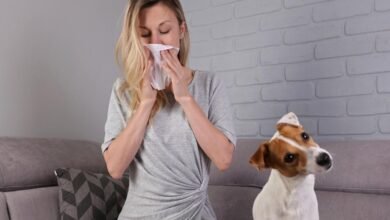
Home proofing for New Pets – A Must-Do for Virginia Pet Owners
Homeproofing for new pets is essential for Virginia pet owners Learn how to create a safe pet-friendly home environment in our comprehensive guide.
Home proofing for new pets is an essential step for every Virginia pet owner preparing to welcome a furry family member. Whether you’re adopting a playful puppy, a curious kitten, or a small animal like a rabbit, ensuring your home is safe and secure will protect both your pet and your belongings. Virginia’s unique housing styles from historic row houses in Alexandria to sprawling farmhouses in the Shenandoah Valley present specific challenges that require thoughtful preparation. From toxic plants to unsecured windows, potential hazards lurk in every corner. This comprehensive guide will walk you through creating a pet-friendly environment that keeps your new companion safe while maintaining your home’s integrity.
The process of home proofing goes beyond simply hiding electrical cords or moving breakable items. It involves assessing your living space from your pet’s perspective, anticipating their natural behaviors, and making adjustments to prevent accidents. A well-prepared home reduces stress for both you and your pet, allowing for a smoother transition during those critical first weeks. By taking proactive measures, Virginia pet owners can avoid costly vet bills, property damage, and unnecessary anxiety. Let’s explore how to transform your Virginia home into a sanctuary where your new pet can thrive safely and happily.
Home proofing for New Pets A Must-Do for Virginia Pet Owners
Understanding the Importance of Pet-Proofing in Virginia Homes
Virginia’s diverse geography and architecture create unique considerations for pet owners. Urban dwellers in cities like Richmond or Arlington face different challenges than those in rural areas, where wildlife encounters and larger properties require additional precautions. The state’s seasonal weather patterns from humid summers to icy winters also influence how we protect our pets indoors and outdoors.
Pets explore their world through chewing, scratching, and climbing, behaviors that can lead to dangerous situations without proper safeguards. Puppies teethe on anything they can find, while kittens’ climbing instincts send them scaling bookshelves and curtains. Small animals like guinea pigs and rabbits may gnaw on baseboards or electrical cords if not properly contained. Understanding these natural tendencies is the first step in creating a secure environment.
Room-by-Room Hazard Assessment
Kitchen and Dining Areas
The kitchen presents numerous dangers for pets, from toxic foods to hot surfaces. Store all human food securely, as many common ingredients including chocolate, grapes, onions, and xylitol (found in sugar-free gum) are poisonous to animals. Trash cans should have Home proofing lids to prevent scavenging, which can lead to intestinal blockages or poisoning.
Small appliances like toasters and blenders should be unplugged when not in use, as dangling cords tempt chewing. Stovetops pose burn risks, so consider using back burners and installing safety gates to keep pets out while cooking. If you have an open-concept kitchen, training your pet to stay out of the area during meal prep is advisable.
Living Room and Common Areas
These high-traffic spaces require special attention since pets often spend most of their time here. Electrical cords should be concealed or protected with chew-resistant coverings. Houseplants must be verified as pet-safe common Virginia plants like azaleas, Cycas revoluta, and lilies are highly toxic if ingested.
Furniture selection plays a key role in pet-proofing. opt for stain-resistant, durable fabrics like microfiber or leather that withstand claws and accidents. If you have a cat, provide designated scratching posts near furniture to deter damage. Secure heavy home proofing and TVs to walls to prevent tipping, especially with climbing cats or energetic dogs.
Bedrooms and Private Spaces
Pets love to sneak into bedrooms, where hazards like loose socks, jewelry, and medications may be within reach. Keep pill bottles in drawers and ensure laundry baskets have lids small items like buttons or hair ties can cause choking or intestinal obstructions. If your pet sleeps in your room, create a cozy, designated spot rather than allowing free reign. This prevents them from chewing on shoes or electrical cords overnight. For cats, ensure blinds cords are tied up to avoid strangulation risks.
Bathrooms and Laundry Rooms
These utility spaces are often overlooked but contain multiple dangers. Toilet bowl cleaners, soaps, and medications should be stored in cabinets with childproof latches. Keep toilet lids closed to prevent pets from drinking contaminated water. Laundry rooms pose unique risks detergent pods, dryer sheets, and loose socks can be fatal if ingested. Front-loading Home proofing and dryers should always be checked before use, as curious pets may climb inside. Consider installing a pet gate to restrict access when unsupervised.
Basements, Garages, and Outdoor Spaces
Virginia’s older homes often have basements or garages filled with tools, chemicals, and clutter. Antifreeze, pesticides, and rat poison must be locked away even small amounts can be lethal. Garages should be kept closed, and cars checked for hiding pets before starting engines. For outdoor areas, inspect fencing for gaps or weak spots where a pet could escape. Remove toxic plants like home proofing or foxglove from gardens. Provide shaded areas and fresh water to prevent overheating in Virginia’s humid summers. If you have a pool or pond, install barriers to prevent accidental drowning.
Virginia-Specific Considerations
Historic Homes and Renovations
Many Virginia residences feature charming but hazardous elements like lead paint, uneven floors, or loose floorboards. If you live in an older home proofing, have it inspected for lead, especially if your pet is a chewer. Renovation projects should be pet-free zones due to dust, nails, and toxic materials.
Wildlife and Pest Control
Virginia’s wildlife including foxes, raccoons, and venomous snakes can threaten outdoor pets. Ensure your yard is secure and supervise pets during potty breaks. Avoid rodent poisons, which can harm pets if they ingest poisoned prey.
Weather Preparedness
From summer thunderstorms to winter snowstorms, Virginia’s weather requires planning. Have an emergency kit with pet food, medications, and a home proofing in case of evacuation. In winter, wipe paws after walks to remove ice-melting chemicals, which can be toxic if licked.
Training and Long-Term Safety
Even the best home proofing requires reinforcement through training. Teach commands like “leave it” and “stay” to prevent access to dangerous items. Crate training helps when you’re away, ensuring pets don’t roam unsupervised.
Regularly reassess your home as your pet grows what worked for a puppy may not suit an adult dog. Stay vigilant for new hazards and adjust as needed.
Read More: How to Recognize the Early Signs of Cancer in Dogs and Cats
Conclusion
Home proofing for new pets is an ongoing process that evolves as your pet grows and explores. By taking these precautions, Virginia pet owners can create a safe, welcoming environment that prevents accidents and promotes harmony. Every home is different, so tailor these steps to fit your pet’s personality and your living space.
Investing time in home proofing now saves money, stress, and home proofing later. A secure home means a happier, healthier pet and peace of mind for you. Whether you’re in bustling Northern Virginia or the tranquil Blue Ridge Mountains, these measures ensure your pet thrives in their new home.
FAQs
What are the most common household toxins for pets?
Chocolate, xylitol, grapes, onions, lilies, and home proofing are extremely dangerous and should be kept out of reach.
How do I protect my furniture from pet damage?
Use scratch-resistant materials, provide home proofing posts for cats, and train dogs with chew toys and positive reinforcement.
Are there any Virginia laws about pet safety at home?
While no specific laws mandate home proofing, Virginia requires pets to be kept in safe conditions neglect due to preventable hazards can lead to legal consequences.
How can I pet-proof my yard in Virginia?
Check fences for gaps, remove toxic plants, secure home proofing bins, and supervise pets to prevent wildlife encounters.
Should I crate my pet when I’m not home?
Crating can prevent home proofing and injuries, but ensure the crate is appropriately sized and comfortable for your pet’s needs.






